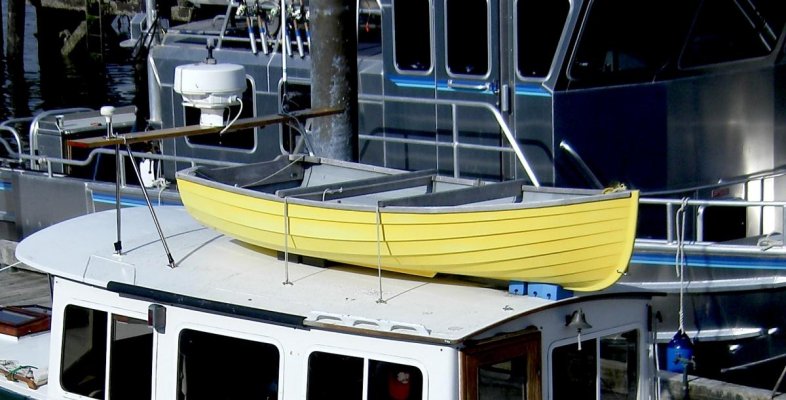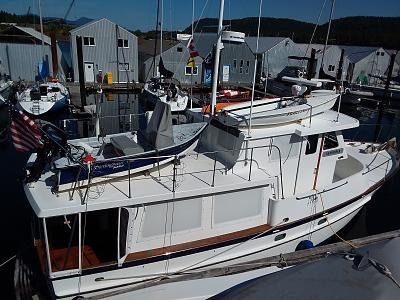We towed our 13' Whaler a lot for a variety of reasons (davit winch out for rebuild, berthed in a marina slip with starboard side tie(where dinghy got lowered), convenience on short trips going from anchorage to anchorage/mooring field), and in a wide variety of sea conditions. It worked out great. We had a good friend who happily cruised his 40-ish Marine Trader solo up and down the east coast for years, towing a 14' Carolina skiff.
A few of the comments so far a pretty valid.
1) If it is going to be kept in the water for long periods at rest, then bottom paint is a good idea. We just had the yard apply it when they were doing the big boat.
2) Docking gets slightly more complicated, but once you have your system down, no big deal. And yes, when transient, you very well might get charged, so dock the dinghy beam to the swim platform and be honest with the marina when you reserve. We got away with it a few times when we could lower the dinghy once the big boat was docked and keep it in the water during our stay, as long as it didn't stick out in the fairway. Our big boat was designed to go bow-in, and I would not want to try and back into a slip with a tow working in any case.
3) I can only speak of direct experience with our boat and our friend, but we ran in some rough steep seas, in our case very glad to have the stabilizers on the big boat, and the dinghy handled them beautifully. There are a few little tricks that help (such as having the motor lowered so the skeg is submerged for better tracking). The little boat would skitter around a bit anyway, sometimes a lot, but never came at all close to being upset. It took a few trips like that until we no longer felt we had to keep a close eye on it constantly, just check every now and then in the course of keeping watch.
For the type of cruising we did, having a larger, heavier dinghy with console was wonderful as we used it extensively to explore wherever we were. Makes a decent fishing platform too, especially getting you into shallow backwaters. And when living on a mooring full time for a few months, as we did a couple of seasons, the extra interior space was great for transporting guests/luggage, and all forms of cargo. When anchored or moored in a harbor, always best to understand the rules and regs of the dinghy dock.
And one last note: when we sold the big boat and moved back on land, we kept the Whaler and use it constantly. Right now it has its own dock in our backyard.


